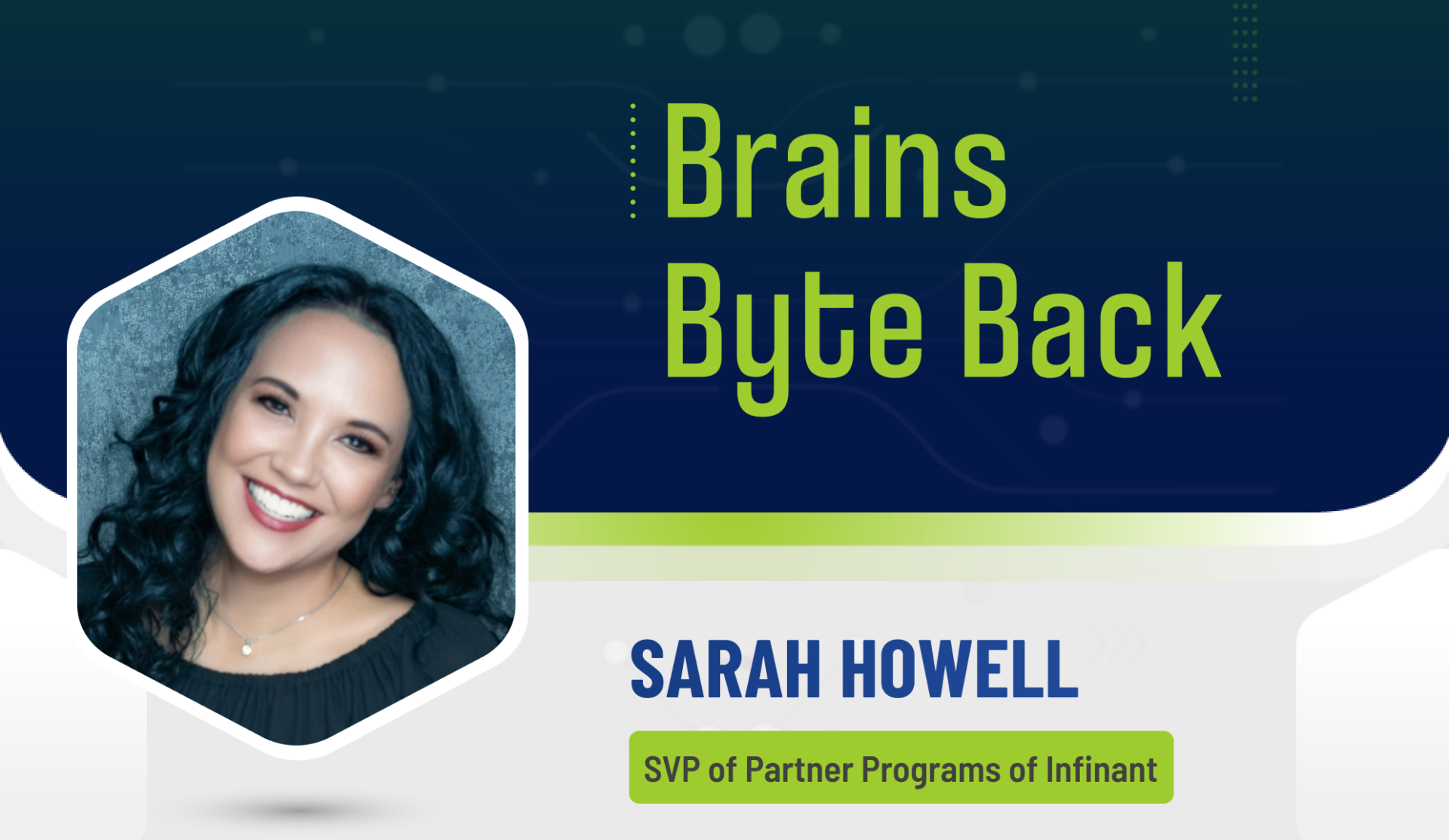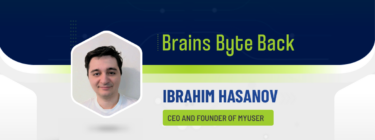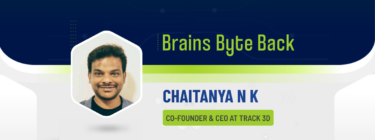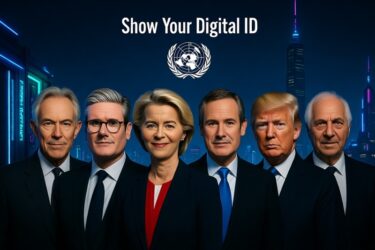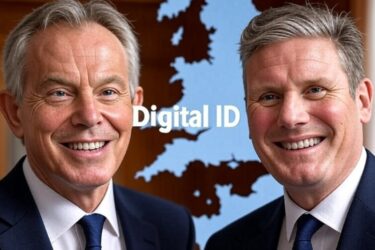In today’s episode of the Brains Byte Back podcast, we are joined by Sarah Howell, SVP of Partner Programs of Infinant, a FinTech company developing tools to help banks thrive in the digital fintech and finance markets, to discuss BaaS, what it is, and how it stands to impact our banking services.
We discuss what “embedded finance” is and why is it important for everyday consumers, and what is “Ecosystem Strategy” and how it impacts BaaS. Alongside how different parts of the world vary when it comes to how advanced their banking systems are, and what parts of the globe are further ahead than others.
You can listen to the episode below, or on Spotify, Anchor, Apple Podcasts, Breaker, Google Podcasts, Stitcher, Overcast, Listen Notes, PodBean, and Radio Public.
Alternatively, you can find a transcript below:
Sarah: So Sarah Howell, grateful to be here, thank you so much for the opportunity. I come from a background in banking and financial technology, from the card space, the card networks to core processing. And now I’m at Infinant and Infinant is a company that allows banks to create embeddable products above their core. So whether or not the product they’re wanting to create is embedded into their own digital banking platform, or embedded into another platform that is a non financial platform. So excited to be here.
Sam: Thank you. And I’m really excited to have you here. I think this will be a really unique conversation, because it’s not something that we’ve necessarily had before. But I think it’s really important to discuss but before you go ahead, I am so curious to know like, what’s the story behind the name? Infinant? And why was it chosen as the name of the business and for listeners, it’s spelled I n f i n a n t.
Sarah: Yes, unfortunately, I cannot spell infinite correctly now, because of having a spelled it for my company for so long. But Infinant is really, it was the name that our CEO had just acquired just the domain name for years and years ago, and our CEO is from the banking industry, he stood up a digital banking platform and sold that to one of the large technology, core banking technology providers in 2020. And he just he had this name floating around. And so he was able to apply it to Infinant and, and really, the the wordplay plays nicely with what we do, because a lot of banks look at their core as giving them the ability to create products. And really what we’re, we’re working with and enabling banks to do is to create products above the core, so that they are not as handcuffed to the core, and able to move with a greater agility and in market and sign up products faster.
Sam: Awesome, fantastic. Well, listeners will know I usually ask my guests the story behind the name of the company. But this one I definitely had to ask. I was super curious about that. So thank you for sharing that. And also, I want to know, like, can you share with our listeners? What is banking as a service? And what does that mean?
Sarah: Good, good question. So I would say that banking as a service is the how embedded finances the what and I’ll explain, if I am in, and non banking application like Apple, right? Apple is not a bank. But I have the ability to, to utilise Apple Pay, I have the ability to add my card to Apple Pay and pay on different websites with the click of a button. Because it’s always it’s just easier. It’s embedded into my Apple experience. And that’s what I consider embedded finance, it’s placing a financial product at the point of need, outside of a financial experience, or a financial application. And so that’s embedded finance, we’re seeing a lot of new use cases for embedded finance, from b2b consumer use cases. Just as the digital economy be just becomes more prevalent, and we become more hyper connected. We’re looking as consumers to have a financial experience embedded into non financial purchases or experiences.
Sam:I had no idea already played such a big role in life and society. And well, I’ve already been using it without even knowing. So that’s really that’s really interesting.
Sarah: Well, in the that’s embedded finance, right, kind of what I explained about Apple, but banking as a service, is all of the infrastructure that has to happen in order for us as consumers to have that experience. And so banking as a service is what are the technologies that are needed? What are the regulatory things that considerations that have to happen when that financial product exists outside of a banking digital banking app? And so banking as a service is what enables us as consumers to have embedded finance experiences.
Sam: Okay, yeah, that makes a lot of sense. And I feel very lucky that we, we have these experiences, because it’s just so easy. Now, I feel so grateful to be alive in this day and age, because I think we just personally, for me, I feel so blessed to have all of these services and everything just seems to getting smoother and easier. In my experience, anyway.
Sarah: Right. Right. But there’s a lot of work that goes on behind behind the scenes. Yeah, right. Yeah,
in order to make that happen. And what it’s done is it’s really created hyper connectivity in the infrastructure layer of the technology layers, so orchestrating API’s across disparate systems in order for those experiences to play out well for the end consumer.
Sam: Awesome, fantastic. Well, I do want to mention something else on your website, you have a blog titled, ecosystems strategy. What is it? And how does it relate to banking as a service and digital supply chain disruption? And then, yeah, in the article, you discuss the industry shift from a traditional market strategy to an ecosystem strategy. Can you share with our listeners what this means and why it’s important?
Sarah: Yeah, sure, this, this article is really meant for bankers, it’s targeted towards bankers who have if you think about banking, bankers have always on the entity and experience and what I mean by that, of the supply chain, bankers own the manufacturing of the financial product, and the distribution of that financial product, either it was being distributed through a branch or with you know, digitisation coming along, it was being distributed through a bank owned digital banking app. Okay. So from end to end, banks own the supply chain. Now, they might use suppliers on the back end, core processors, card providers, but those were always suppliers at the bank. And it was the bank creating the IP for that financial products. With embedded finance and banking as a service, what happened was a lot of the the technology providers like an Apple or somebody that saw a use case to embed a financial product, they didn’t necessarily go to the bankers to develop that product, they went straight to the banker, suppliers, so the card providers, the core processors, in order to create those financial products, so we had a disruption in the supply chain. So there are some banks that have really adopted the understanding that that happened. And you know, how can I pivot and make sure that I’m staying relevant, and I’m part of that embedded finance flow. And then there are others who are still very focused on serving their customer base and owning the end to end supply chain. And the reason that I joined Infinant was because I felt like Infinant gave banks the opportunity to play in both strategies, the traditional market strategy where I own the end to end experience, I’m producing the financial product. And I am distributing that financial product within my ecosystem, as well as the embedded finance strategy where I might be a part of the helping produce that product, because from a regulatory perspective, I need to sign off on that product before it can go to market. But I’m aware of the fact that that product will not exist in an application that has been combed. And so those are two completely different strategies for a financial institution to embrace. And so I’m writing a lot on the blog, because I want to be sensitive to the fact that that is a big strategic shift for a lot of banks to make, and it’s not easy. And so the ecosystem strategy and discussions about that is meant you help them make that transition, and bring their organisations along as they transition to a dual strategy of direct and then embedded.
Sam: Okay, cool. I mean, I have to admit, as a novice, like myself, it sounds very advanced. And I have to say that I’m in a position where I’m based in Colombia. And one thing when it comes to banking in general, I’ve noticed that can’t be so far behind. So I’m really excited about all of these movements. And like we mentioned before, I feel lucky to be alive in such a fascinating time. Although I definitely do feel like I’m in a period of time, which is like 10 or 20 years behind the rest of the world, being from the UK myself. And I don’t want to be too arrogant, but I definitely do, or have noticed that the UK alongside the US has fantastic banking products, banking systems, and the disparity between the two countries is like, so stark, so I definitely feel like I’m on a bit of an island when it comes to all of this. But it sounds like some exciting things are certainly happening over there at least.
Sarah: Well, yes. But then it’s funny that you say what you did, because a lot of folks will say that the US lags behind. And and part of that is it depends on the government structure, right? You have a highly regulated industry, where changes for embedded finance are standards for embedded finance, in open banking are mandated at the state level. It does make it to a certain degree a little bit easier for you companies to align to those standards. And you brought up the UK and the EU, the European Union launched PSD two, which was a regulartory mandate, well not really. Well, it was for standards of how we would do open banking, how banks would open up their platforms for other third parties to extract data about their users and to build financial products. Those types of standards do not exist in the US. And so there are movements for different players within the space to align on standards. FDX is one movement, the FDX consortium is one movement to say, Okay, if we’re going to build API’s for open banking, these these are the standards that we as a consortium agreed to. So yeah, it depends.
Sam: It depends. Yeah, entirely. I suppose it’s perspective. But it’s so funny to hear, like the US lagging behind that sense, because I’m just like, oh, wow, they’re lagging behind. Where are we? But anyway, that’s a subject for another conversation. I would love to know, as well, though, like, Are there are other companies operating in this space? And if so, like, how do you folks differentiate yourself from the competition?
Sarah: Yeah, great question. So there are others companies, definitely other companies that have set out to solve for the embedded finance needs. And like I said earlier, some of the technologists who wanted to build a product, they bypass the banks, and they went straight to the bank, suppliers. There’s infrastructure providers, like card processing providers, and core card processing was really the main providers that they went to, because you could get the interchange revenue, and you could split it. So it was a commercial interest, that benefited both parties. And so we ended up with a structure where you had a technology platform that had a partnership directly with a card processor. And then that card processor would bring a bank along or that technology provider would go out and get a bank. And then the the technology provider would say, Okay, this is the kind of product that we want to bring to market, the cart processor would build it, and the bank would approve it or talk about what changes need to be made in order for, for it to be compliant with the regulations. So that’s kind of this process we’ve evolved into. So other players in the space that are doing similar to what we’re offering would be like a card processor or a core provider within eight with API’s that they’re exposing to those technology providers that want to build products. There’s been another evolution in the space where you have almost what they call bass connectors or bass middleware providers. And those guys will connect banks on the back end for settlement. And then they will create they’ve they have an API dev portal, that allows the technology providers to come straight to them. And they’re distributing different, you know, programmes across the bank network that they’ve created. On the back end, I would say that what our platform allows banks to do is to actually own that API development platform. So they’re not having to outsource to a BAS middleware, or BAS connector provider. So some of the names in the space that do that are like a unit to Treasury prime, or St. Tara. Bond is another one Rise, there are these middleware providers that are providing a dev portal for technology companies to connect to. Personally, we feel like the bank should own those dev portals and be a have a greater contribution to the production of the products that are being manufactured on behalf of that technology provider, so that they can have greater control of the financial embedded products that are being made.
Sam: Okay, okay, cool. I think I got that. And I yeah, I can see how that would be a strong factor to distinguish yourself with. And I’m really only have one last question for you like, what are you folks focusing on next, like what’s on the horizon for you?
Sarah: Yeah. We think that embedded finance is applicable not just for technology companies, but also for banks to embed other products, especially like real time payments, and maybe more horizontal offerings like accounting, investments, insurance, all of these things that banks are currently offering on it in an analogue fashion while you’re just signing up for it. We’re looking at integrating those into our solution set so it makes it easier for banks to create a digital experience where those other products are off. furred up through their digital banking app, or that they can resell to their embedded finance customers. So really just a hyperconnectivity of, of different products and offerings that are adjacent to financial services, but net may not be traditionally in the financial services space.
Sam: Awesome, fantastic. Well, it sounds like you folks have really got a lot on your plate at the moment, and you’re moving forward with some really cool stuff. And I want to know, like, if listeners are listening, and they want to find out more about you, or keep up with the work that you folks are doing, or even reach out to directly Sarah, how can they do that? What are the best channels to go through?
Sarah: Yeah, sure. Feel free to just email me as [email protected]. That’s infinite i n f i n a n t.com. Or just look us up online and follow us on LinkedIn, Twitter, where we’re out there.
Sam: Yeah, very important. Yeah. But we’ll, we’ll have all those links in the show notes there for you. So people can check those out. But otherwise there I want to thank you so much for joining me today. This has been a really new topic for me. And yeah, it sounds really exciting.
Sarah: Yeah, thank you so much for the time, Sam. I really appreciate it.
Disclosure: This episode includes a client of an Espacio portfolio company



